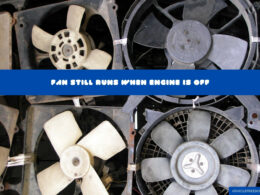In This Article Show
As an experienced mechanic with over 13 years in the field, I’ve encountered a vast array of vehicle issues and quirks. One of the common areas that vehicle owners often have questions about is the clutch break-in period.
So, I’ve decided to share some of the knowledge I’ve gained over the years, in the hope that it will demystify this often overlooked yet vital process.
The clutch is the heartbeat of your vehicle, orchestrating the interaction between the engine and the wheels. Getting it right from the very beginning — the break-in period — can spell the difference between a smooth, efficient ride and recurrent visits to the mechanic’s garage.
This blog post’ll delve into what a clutch break-in period is, why it’s important, and how to do it properly. From my experience working on clutches to the tips and tricks I’ve picked up over the years. Lets dig in.
Understanding the Clutch Break-In Period
Have you ever wondered why a fresh pair of shoes feel a little stiff and uncomfortable at first, but after wearing them for a while, they just seem to fit perfectly? Well, that’s kind of what a clutch break-in period is like.
The clutch break-in period, often called the “bedding-in” period, is a crucial initial phase following the installation of a new clutch. During this period, which typically lasts between 500 to 1000 miles of driving, the clutch disc and the flywheel begin to adjust to each other, forming a perfect match, much like your feet and a new pair of shoes.
Breaking in a new clutch is a process of controlled wear, designed to establish a smooth, uniform layer of friction material from the clutch disc onto the flywheel. The key here is ensuring that this layer is even. Uneven patches can lead to clutch judder or a clutch that grabs and causes rough shifts.
It’s important to know that this break-in period isn’t just something mechanics invented to make your life more difficult. It’s a tried and tested process, recommended by manufacturers, which can significantly extend the life of your clutch and enhance the overall driving experience.
Why is the Clutch Break-In Period Important?
A clutch, much like other components of your vehicle, is designed with precision and intended to operate under specific conditions. By observing the clutch break-in period, you’re ensuring that these conditions are met, which in turn, secures the overall performance and longevity of the clutch system.

Here are the key reasons why the clutch break-in period is essential:
1. Ensures Proper Clutch Performance
The break-in period allows for the optimal transfer of power from the engine to the transmission, ensuring smooth gear shifts and a responsive clutch pedal. This is achieved when the clutch disc and the flywheel are evenly worn in, facilitating a smooth engagement every time you change gears.
2. Prevents Premature Clutch Wear
A clutch that’s not correctly broken in can wear out prematurely. This is due to uneven friction material transfer, which can cause the clutch to grab, slip, or judder. These issues result in extra strain on the clutch system, leading to faster wear and tear.
3. Enhances Fuel Efficiency
A properly functioning clutch is key to maintaining optimal fuel efficiency. Misalignment or a poorly broken-in clutch can cause unnecessary energy loss, leading to higher fuel consumption.
4. Saves Money in the Long Run
Addressing clutch issues can be costly. By taking the time to break in your clutch properly, you are essentially investing in its lifespan, saving yourself potential repair or replacement costs down the line.
Remember, the importance of the clutch break-in period goes beyond the initial thousand miles. It sets the tone for your vehicle’s performance in the long run, ensuring a smoother, more efficient driving experience.
Signs of an Improperly Broken-In Clutch
Spotting an improperly broken-in clutch early can save you from costly repairs and inconvenient breakdowns. Here are some signs that might indicate that your clutch didn’t get the gentle start it needed:
1. Clutch Slippage
This happens when the clutch disc doesn’t engage fully with the flywheel, causing a loss of power, poor acceleration, or a noticeable rise in engine revs without a corresponding increase in speed. This might be a result of an uneven friction layer, which can occur if the break-in process was rushed.
2. Rough or Hard Shifting
If changing gears feels unusually hard or the transition is not smooth, it could be a sign that the clutch is not properly broken in. This can occur when the clutch disc and the flywheel don’t match up due to uneven wear.
3. Unusual Noises
Squealing, grinding, or chattering sounds when the clutch is engaged or disengaged could indicate a problem. These noises might mean that the clutch isn’t properly aligned with the flywheel, often a consequence of an incorrect break-in process.
4. Frequent Stalling
If your car stalls more often than usual, especially when moving off from a stop, it could be a sign that the clutch isn’t properly broken in. This can occur when the clutch disc isn’t fully engaging with the flywheel, causing a loss of power to the wheels.
5. Clutch Judder
This refers to a shuddering or shaking sensation when the clutch is engaged or disengaged. It’s often caused by an uneven transfer of friction material from the clutch disc to the flywheel, resulting from an improper break-in period.
These signs could indicate a prematurely worn-out clutch or other related problems. If you notice any of these symptoms, it’s best to consult a professional mechanic to diagnose and rectify the issue. Remember, catching problems early can prevent more serious, expensive issues.
Tips for Maintaining Your Clutch After the Break-In Period
Now that you’ve mastered the art of the clutch break-in, it’s essential to maintain that good start with proper clutch care. Here are some tips to help prolong the life of your clutch and ensure continued smooth performance:
1. Regularly Check Your Clutch Fluid
Just as you would check your oil, it’s important to inspect your clutch fluid levels regularly. Low or contaminated fluid can affect clutch performance.
2. Avoid Resting Your Foot on the Clutch
As mentioned earlier, “riding the clutch” can lead to excessive wear. Try to get in the habit of keeping your foot off the clutch pedal when not in use.
3. Use Your Clutch Wisely
Try to avoid unnecessary clutch use. For example, put your car in neutral and release the clutch when you’re at a stop light. This reduces the pressure on your clutch and can prolong its life.
4. Don’t Use the Clutch to Hold on a Hill
Using your handbrake is better than balancing the clutch when on an incline. Using the clutch in this way can lead to excessive wear.
5. Get Regular Servicing
Regular professional inspections can spot potential problems before they become serious. A mechanic can check your clutch’s condition during a routine service and suggest necessary actions.
These tips can help keep your clutch in top shape long after the break-in period.
Frequently Asked Questions about Clutch Break-In
How long does the clutch break-in period typically last?
Generally, the break-in period for a new clutch lasts around 500 to 1000 miles of city driving. The exact duration can vary depending on the vehicle model, type of clutch, and your driving style.
Can I drive on the highway during the clutch break-in period?
While doing some highway driving is not harmful, city driving is usually preferable during the break-in period. This is because the start-stop nature of city driving offers more opportunities for the clutch to engage and disengage, helping to evenly distribute the friction material.
What happens if I don’t observe the clutch break-in period?
Neglecting the break-in period can lead to issues like clutch slippage, rough shifts, premature wear, or even total clutch failure. It may also result in reduced fuel efficiency.
Is the clutch break-in process different for different types of vehicles?
While the basic principle remains the same, the exact process can vary depending on the type of vehicle and the specific clutch system. Refer to your vehicle’s manual or consult a professional mechanic for guidance.
Do I need to break in a replaced clutch?
Yes, any new clutch—whether in a new car or a replacement clutch in an old one—must be broken in. The break-in period allows the new clutch disc and the flywheel to adjust to each other, ensuring optimal performance.
Wrapping it up
Don’t worry if you still have questions about the clutch break-in process; it’s a lot to take in. Always feel free to consult with a professional mechanic (like myself) or refer to your vehicle’s manual if you’re in doubt.
A little bit of knowledge goes a long way in maintaining the health of your vehicle!











